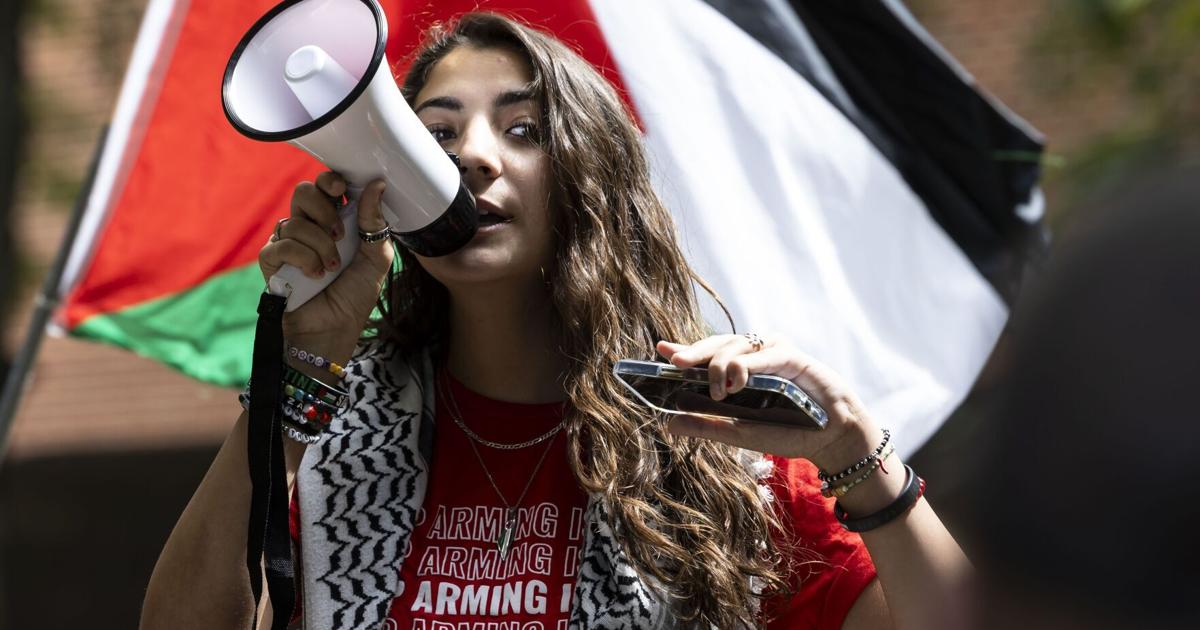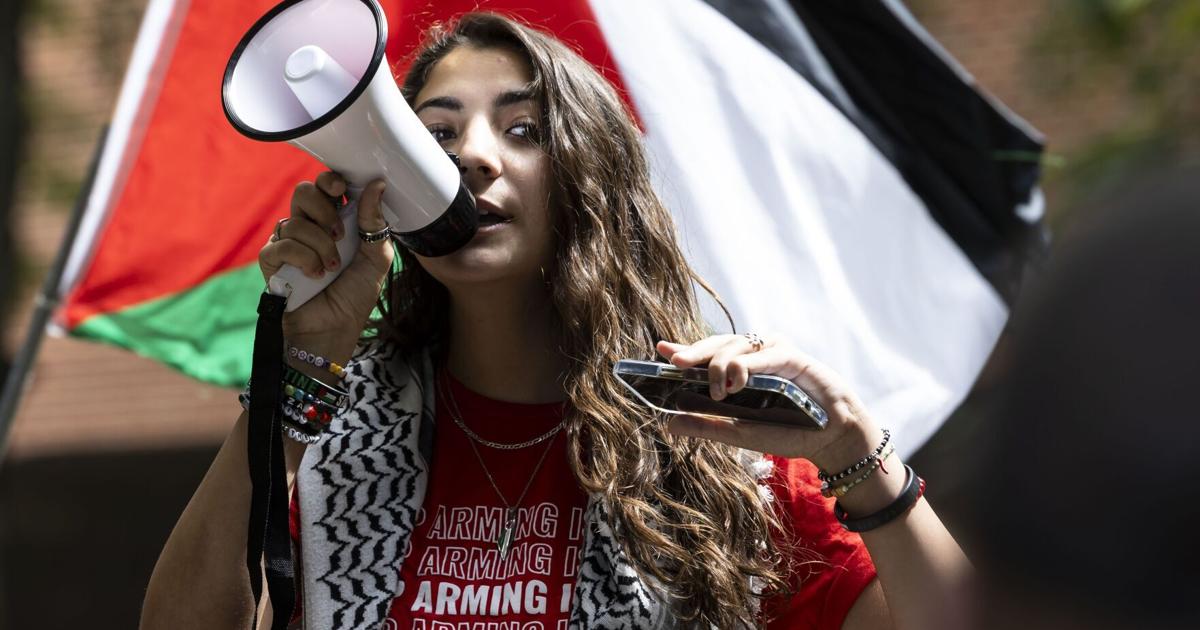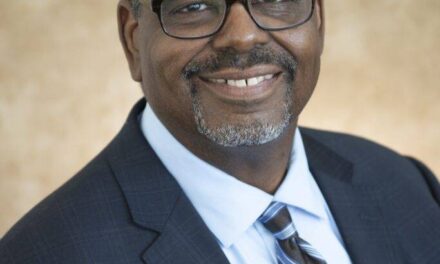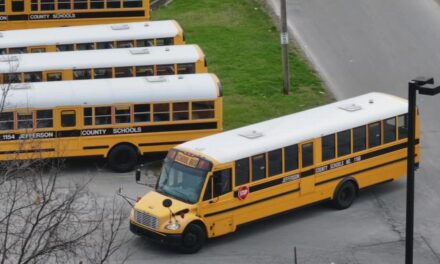
{ if(window.Osano?.cm?.getConsent().ANALYTICS === ‘ACCEPT’){ if (window.TRINITY_PLAYER && TRINITY_PLAYER.players[‘article-body-43621040-6ae5-11ef-9482-af9778c30b55’]) { TRINITY_PLAYER.api.createPlayer(‘article-body-43621040-6ae5-11ef-9482-af9778c30b55’); } else { let id = ‘2900013015’; if(__tnt?.ads?.dfp?.af || window.Osano?.cm?.getConsent().MARKETING != ‘ACCEPT’) id = ‘2900017379’; const text = encodeURIComponent(btoa(‘#article-body’)); var js = document.createElement(‘script’); js.setAttribute(‘data-player-id’, ‘article-body-43621040-6ae5-11ef-9482-af9778c30b55’); js.src = `https://trinitymedia.ai/player/trinity/${id}/?pageURL=https://richmond.com/news/local/education/pro-palestine-vcu-students-protest-at-park-plaza/article_43621040-6ae5-11ef-9482-af9778c30b55.htmlpoweredBy&partner=Flex&textSelector=${text}&FAB=1`; document.body.appendChild(js); } } else { document.getElementById(‘lee-trinity-player’).style.display=’none’; } })(); ]]>
A few weeks after Virginia Commonwealth University adopted new campus protest rules, pro-Palestine students held a walkout to voice their opposition to the new guidelines while continuing to advocate for a free Palestine.
“It 100% shows that the student movement is nowhere near stopping,” VCU third-year student Sereen Haddad said. “It shows that no policy and no tactic that the university tries to administer is going to stifle our voices.”
Sereen Haddad laughs as she speaks to VCU students during a walkout in support of Palestine held at Park Plaza on campus in Richmond on Wednesday.
NICOLAS GALINDO, TIMES-DISPATCH
In August, the university announced several changes regarding protests, including the banning of tents, requiring advance approval for encampments and requiring mask-wearers to present ID.
Wednesday’s gathering was held at Park Plaza, in part because it is now one of the few locations on campus where students are permitted to write messages of support with sidewalk chalk.
People are also reading…
Student speakers included representatives from Students for Justice in Palestine, a campus group that advocates for Palestinians with protests, boycotts and educational events.
Haddad, who is Palestinian-American, said 154 of her family members have died since October from Israeli attacks.
More than 40,000 Palestinians have been killed during the Israel-Hamas war, according to the health ministry in Gaza. But Israeli officials in the past have questioned the accuracy of the figures because of Hamas’ control over government in Gaza.
“They are not just numbers, they are not statistics; these are people with real lives, and they’ve had real dreams and aspirations,” said Haddad. “We have been systematically dispossessed; our homes have been demolished and our land has been stolen and our voices have been silenced.”
VCU students write letters at a table set up next to a walkout protest in support of Palestine held at Park Plaza on campus in Richmond on Wednesday.
NICOLAS GALINDO photos, TIMES-DISPATCH
At VCU, pro-Palestine protesters previously gathered around the James Branch Cabell Library, including on April 29, when an encampment was broken up by police with riot gear and chemical agents. The protests resulted in 13 arrests.
When referencing the April confrontation, students delivered pointed criticism toward VCU Police, Richmond Police and Virginia State Police, as well as Gov. Glenn Youngkin, VCU President Michael Rao and other campus officials for “deploying these brutal police forces.”
“This was a peaceful protest, part of a larger wave globally with the aim to pressure the university to divest from Israel,” VCU student Zahra Jalajel said. “This escalation by the administration resulted in the traumatic and violent brutalization of hundreds of people in the VCU community.”
A small number of campus officers walked by the crowd during and after Wednesday’s event without incident.
Joseph Friedman, a Jewish fourth-year student at VCU, said he has felt welcome by the Palestinian activists and community in Richmond while supporting their cause.
“As a Jewish person, I feel responsibility to take part in this, even more so than other movements, because I feel like I want to show that there is a real Jewish opposition to what’s going on in Palestine,” he said.
Friedman said while he empathizes with Jewish community members who believe that the protests are antisemitic, he disagrees with their viewpoint.
“I think a lot of people feel that way sincerely because of what they’ve been taught and because of the real history of oppression,” Friedman said. “The feeling is real, even if I think it’s misplaced. People need to challenge themselves to get out of their comfort zone a little bit.”
Sereen Haddad speaks to VCU students during a walkout in support of Palestine held at Park Plaza on campus in Richmond on Wednesday.
NICOLAS GALINDO, TIMES-DISPATCH
William Spencer, a second-year transfer student at VCU, has been involved with social justice protests for more than a decade, including April’s protest where he said he got pepper-sprayed.
Spencer, who has studied protests from previous decades, said that he was not surprised by VCU changing the rules leading up to the new school year.
“There was a pretty big change in terms of universities sort of realizing ‘oh, we can just slowly encroach on students’ rights pretty easily,’ especially after last year.” Spencer said. “It’s a pretty big and huge shift in terms of universities cracking down on student protests in ways that I haven’t seen in a long time.”
A visual history of campus protests in the US
A visual history of campus protests in the US
The current wave of pro-Palestinian protests on college campuses has thrust the long history of student activism in the United States into the national spotlight.
The student-led rallies, encampments, and building takeovers that began at Columbia University in New York City on April 17 and spread to campuses nationwide are not without precedent. Nor are the varied outcomes of the protests. From authorities clamping down on protestors to instances of violence and destruction—and, in some cases, peaceful resolution—echoes of the past are present in pro-Palestinian demonstrations today.
Stacker curated a collection of photographs of student-led demonstrations from the last century to contextualize the history of protest movements on American college campuses.
Campus protests trace back at least a century to Fisk University, where protests in the 1920s against then-campus President Fayette McKenzie served as a precursor to the Civil Rights Movement. From hunger strikes during the Vietnam War to recent “die-ins” pushing for gun control reform, campus activism has long challenged political and social norms, often bringing simmering issues to the forefront of public consciousness.
College protests have long drawn attention to issues of racial and gender equity, at times advancing or pushing back against legislation. In 1976, the women’s crew team at Yale staged a “strip-in” to protest their lack of resources, an early flex of Title XI legislation. Nearly five decades later, students at the University of Austin, Texas, marched for a different sort of autonomy, going to the State Capitol in protest of the state’s impending sweeping abortion ban.
Pro-Palestinian protestors say their goals include expressing solidarity with Palestinian rights and raising awareness about the rising death toll and ongoing humanitarian crisis in Gaza. Some groups are calling for universities to sever financial ties with companies they see as benefiting from Israel’s military campaign in Gaza, an offensive launched in response to the Oct. 7, 2023, attacks.
Not all protests have proceeded—or ended—peacefully. Some students have offered stark examples of protests that cross the line from criticism of Israel into antisemitism. Classmates, in certain instances, attest to the hostile environment for Jewish students and threats to their safety.
After weeks of escalating tensions on campuses, in early May, law enforcement was called in at various universities across the country to break up pro-Palestinian encampments and disperse students. Some resulted in skirmishes and arrests; others took a violent turn. At least four universities, however, have seen peaceful outcomes. At Rutgers University in New Jersey and Brown University in Rhode Island, students agreed to dismantle encampments after the administration agreed to consider their demands.
While commentators have been quick to draw parallels between 2024 and the social justice movements of 1968, making historical comparisons is always thorny—particularly when complex issues are reduced to single events or examples.
The current movement faces a particular challenge in balancing students’ right to congregate and speak freely with the right for all students to feel safe on campus. Each movement is unique, as the photos below attest.
![]()
Howard Ruffner // Getty Images
1933: Columbia University students strike in defense of ‘academic freedom’
In 1933, Columbia failed to reappoint Donald Henderson, an economics instructor who was ostensibly let go because of his role as a Columbia Social Problems Club leader. In other words, Henderson liaised with communists or was one himself. Protesters in support of Henderson fought hand-to-hand with supporters of the opposition, and police broke up the fighting with nightsticks. Even famed Mexican artist Diego Rivera got in on the action.
1940: Students for Peace protest America’s involvement in WWII
While many World War II images depict young people proudly going off to serve their country, there was opposition among them. Campus groups like Students for Peace Against Involvement of America in War and early pacifist organizations like the War Resisters League set the foundation for “revolutionary nonviolence.” Student concerns included imperialism, colonialism, and profiteering from war.
Keystone-France/Gamma-Keystone via Getty Images
1968: UC Berkeley’s anti-draft ‘Vietnam Commencement’
In a somber ceremony, thousands of students attended an anti-draft “Vietnam Commencement” at the University of California, Berkeley, where some pledged to refuse military service. The 1968 ceremony, which resembled a graduation, took place in Berkeley’s Sproul Hall, the current site of a pro-Palestinaian sit-in. The school had already been famous for protests in 1964 during the student-led Free Speech Movement (anti-war, civil rights). Though the Vietnam War would drag on for another six years, 1968 was an inflection point for conscientious objectors, often young men ages 18 to 35 eligible for conscription under the Selective Service Act.
1968: Howard University students call for radical administration change
In 1968, Howard University students took over an administrative building to demand drastic changes at the storied historically Black university. Among their conditions were a greater emphasis on African-American studies and a change in administrative leadership. “Our demand is an answer—we want you to say publicly what you think about these issues,” Adrienne Manns Israel, one of the original protest organizers, told the Zinn Education Project.
Bettmann Archive // Getty Images
1968: Students for a Democratic Society occupies Hamilton Hall at Columbia University
Protests culminated from the Civil Rights Movement, anti-Vietnam War sentiment, and the discovery that Columbia was financially tied to arms supporting the Vietnam War. More than 1,000 protesters took over five buildings and the dean was taken hostage. The events at Columbia were later called “the most powerful and effective student protest in modern American history” in historian Mark D. Naison’s 2002 memoir, “White Boy.”
1969: Black Student Strike at the UW Madison
During the same period of the uprising, the Black Students Strike at the University of Wisconsin–Madison pushed the administration to comply with a list of “non-negotiable” demands, including instituting a Black Studies Department and admitting at least 500 Black students the next semester. During the two-week protest, the governor activated the Wisconsin National Guard, a move that galvanized even more protesters to come out and march to the capital.
1969: Central State University students assemble in Columbus, Ohio, to oppose admissions policies
As the oldest private historically Black university in the nation and the site of a stop on the Underground Railroad, Central State University has activism in its DNA. In 1969, students pressed the administration for more funding and an end to the limit on students admitted from out of state. During a meeting on the steps of the State House, students showed solidarity with the black power salute.
1970: GW University students carry on anti-war demonstrations near Watergate complex in DC
George Washington University, once dubbed the “Holiday Inn of the Revolution” for hosting anti-war protestors in dorms, has a long history of campus activism dating back to the Civil War. During the Vietnam era, anti-war demonstrators faced off with DC Metro police as they marched to the locus of Republican power, the Watergate Complex (interestingly, designed by Mussolini’s favored architect) that soon would become notorious for the eponymous scandal.
Wally McNamee/CORBIS/Corbis via Getty Images
1970: Protests erupt following Kent State shootings
May 4, 1970, is branded in national memory as a day of tragedy at Kent State University. During a protest calling for the end of the war in Vietnam, the Ohio National Guard fired into a crowd, killing four students and injuring nine. Other students were met with tear gas and rubber bullets. The horrific event became a flashpoint in the national upheaval over the United States’ involvement in Southeast Asia.
1970: Students protest racial injustice at Jackson State College
Weeks after the Kent State shootings, another tragedy took place at a protest against racial injustice outside of Alexander Hall at Jackson State College in Mississippi. Students at the historically Black college were gathered by the dormitory—some protesting, others not—when the police opened fire. Two students were killed and 15 wounded. The incident didn’t receive as much public attention as Kent State, the officers were never charged, and the Black families of the victims were not awarded damages.
JSU Communications/Jackson State University/Historically Black Colleges and Universities via Getty Images
1985: Students camp out at Columbia University’s Hamilton Hall to protest apartheid
During the Anti-Apartheid Movement, protestors at Columbia University demanded that the university withdraw its investments in South Africa. The protest would set a precedent at the school, where calls for divestment continued into the 21st century when Columbia withdrew investment funds from fossil fuels and private prison companies after student campaigns. Pro-Palestinian protestors occupied the same building to call for divestment from Israel 56 years later, almost exactly to the day.
1999: University of Minnesota students demand action regarding sexual conduct investigations
Long before the #MeToo movement, members of feminist and advocacy groups raised awareness about violence against women by staging demonstrations at the University of Minnesota to protest the protection of athletes accused of sexual misconduct. Among them included the Gender Liberation Action Front and advocates against sexual violence, who led a peaceful demonstration while demanding action against athletic officials who allegedly intervened in assault and sexual conduct investigations involving athletes.
BRUCE BISPING/Star Tribune via Getty Images
2014: Washington University students protest to draw attention to police abuse
When Michael Brown, an unarmed Black man, was killed in Ferguson, Missouri, by white police officer Darren Wilson, protesters at nearby Washington University in St. Louis raised awareness about ongoing police injustices with “hands up” walkouts. Later that year, when a grand jury determined Wilson would not face criminal charges, protests erupted across the nation and thrust the Black Lives Matter movement into the national spotlight.
2017: Emerson College students walk out to protest on-campus racism
In 2017, about 200 Emerson College students walked out of class to protest the administration’s inadequate response to racism on campus. Marching to a nearby theater where about 80 faculty members were gathered, they chanted, “No more oppression, no microaggressions,” and called for the administration to do more than go beyond “surface-level progress.”
David L. Ryan/The Boston Globe via Getty Images
2018: Student activists lead ‘die-in’ protesting gun violence at NYU
In 2018, New York University students participated in a “die-in” on the 20th anniversary of the 1999 Columbine High School mass shooting. They were joined by activists from around the nation demonstrating their frustration with relentless gun violence by protesting with stillness and silence on campuses and in public spaces. Driven by young people, movements like March for Our Lives amplified calls for gun control reform and pushed for legislation in recent years.
So far, as of April 2024, there have been 66 occurrences of gunfire on school grounds this year alone, resulting in 26 deaths.
Story editing by Nicole Caldwell. Copy editing by Paris Close. Photo selection by Michael Flocker.
A visual history of campus protests in the US
1970: GW University students carry on anti-war demonstrations near Watergate complex in DC
George Washington University, once dubbed the “Holiday Inn of the Revolution” for hosting anti-war protestors in dorms, has a long history of campus activism dating back to the Civil War. During the Vietnam era, anti-war demonstrators faced off with DC Metro police as they marched to the locus of Republican power, the Watergate Complex (interestingly, designed by Mussolini’s favored architect) that soon would become notorious for the eponymous scandal.
Wally McNamee/CORBIS/Corbis via Getty Images
Thad Green (804) 649-6023



